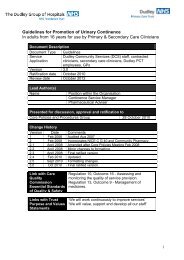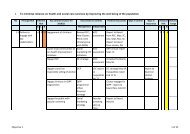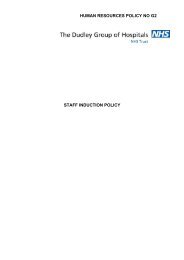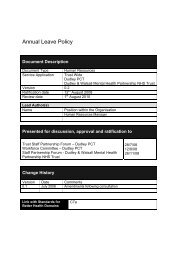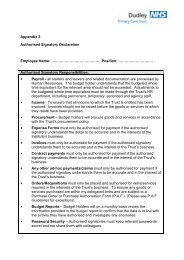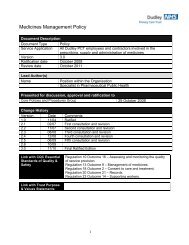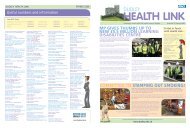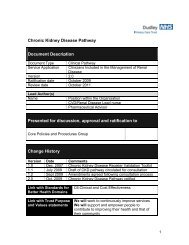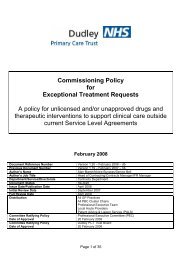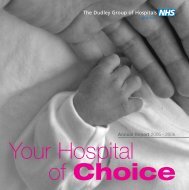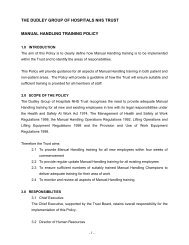Dudley Strategy for Tackling Health Inequalities 2010-15
Dudley Strategy for Tackling Health Inequalities 2010-15
Dudley Strategy for Tackling Health Inequalities 2010-15
- No tags were found...
You also want an ePaper? Increase the reach of your titles
YUMPU automatically turns print PDFs into web optimized ePapers that Google loves.
An important addition to this arrangement is the recent development of a <strong>Dudley</strong>Borough Faith Leaders‟ Network which was <strong>for</strong>mally launched in November 2009.This strengthens the united voice of all religions that are represented in the Boroughin a variety of ways.The voluntary, community and faith sectors are important to our health inequalitiesbecause they often work in areas of deprivation where the issue of health inequalitiesis at its sharpest in terms of the multiple issues that affect those areas relating toemployment, income, housing, skills and experience of health. The work of thesector – particularly in its representative and advocacy roles - often enables thepublic sector to see more clearly how communities are developing and responding tothe many issues that they face in relation to health inequalities.The <strong>Dudley</strong> Community Partnership worked with the sector to produce “In ItTogether” a strategy <strong>for</strong> engagement. The title indicates the overall sharedcommitment in the locality and recognition that our work together is how we can bestrespond to issues of multiple deprivation and sequencing of interventions across allsectors in proactively responding to the challenges we face.This was something that was noticed by the HINST when they visited us.recognised the following points:TheNext stepsThere are positive ef<strong>for</strong>ts being made to engage the third sector in identifyingpriorities and opportunities <strong>for</strong> them to become engaged in the healthinequalities agenda. Valuing People: Moving Forward Together, (Great Britain.Department of <strong>Health</strong>, 2004) Compact agreements are some examples of thisA new document on commissioning with voluntary, community and faithorganisations should help to develop this sector further as potential providersof services <strong>for</strong> the Local Authority and the PCTThe Faith Leaders Network has already identified work on poverty andhomelessness as possible areas <strong>for</strong> joint workingWe have a positive context in which to move <strong>for</strong>ward in our engagement with thevoluntary, community and faith sectors as it affects health inequalities in <strong>Dudley</strong>.Most recently, with the support of the Office <strong>for</strong> the Third Sector, we have engagedwith further dialogue to develop our relationship and any practical changes that mightresult from that. For example, it is important to us that our local sector isappropriately skilled to participate in tendering exercises to maximise their chances ofsuccess within the competitive model. The sector will be addressing that withappropriate support. This will add to the way in which health inequalities can beaddressed in the Borough through direct service provision or by strengthening thevoice of specific communities in service planning, <strong>for</strong> instance, which will influenceservice delivery.The Coalition Government‟s approach to the Big Society and a renewed emphasis onlocalism and civic engagement mean that the voluntary and community sector remain190




